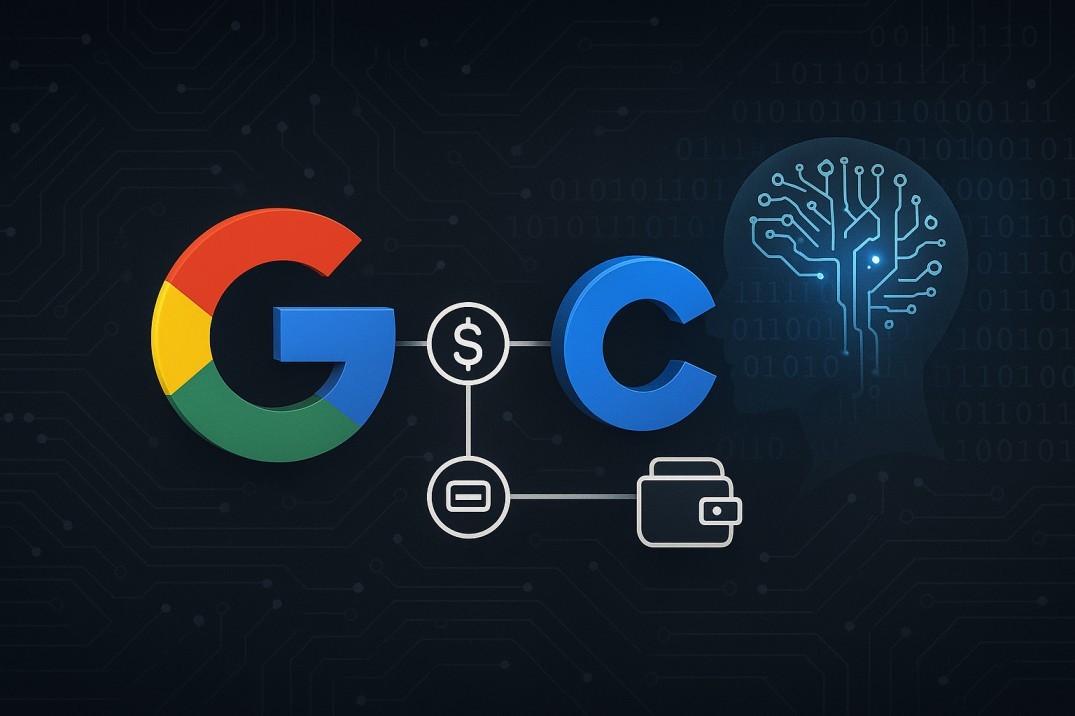TL;DR
- Google upgrades its open-source protocol to enable AI applications to send and receive payments, including stablecoin transactions.
- Coinbase, the Ethereum Foundation, Salesforce, American Express, and Etsy are part of the collaboration.
- $289B worth of stablecoins are now in circulation, showing rising adoption.
- This could lead to AI agents capable of handling tasks like shopping, subscriptions, and even mortgage negotiations.
- Marks a significant bridge between AI technology and real-world finance.
Google is taking another major step toward merging artificial intelligence with finance. The tech giant announced an upgrade to its open-source "Agents-to-Payments" (AP2) protocol, allowing AI applications to send and receive money. That includes stablecoins - crypto tokens pegged to fiat currencies like the U.S. dollar.
This initiative brings together some of the biggest names in both crypto and traditional finance: Coinbase, the Ethereum Foundation, Salesforce, American Express, Etsy, and over 60 other organizations. Google's goal is to make payments as seamless and secure as the AI workflows themselves. With this update, developers can build AI-powered tools that don't just make recommendations - they can actually complete transactions on a user's behalf.
Stablecoins as the Missing Link

Stablecoins have been one of the fastest-growing segments in crypto. According to DefiLlama , $289 billion worth of stablecoins are in circulation - a jump from $205 billion at the start of the year.
For Google, stablecoins are the perfect bridge between crypto-native systems and traditional finance. They offer the speed and global reach of blockchain while keeping prices tied to the dollar. Coinbase, which is co-creator of USDC, is central to this integration. The exchange has been working on AI-integrated payment rails to make stablecoin transactions smooth for both users and businesses.
AI Agents That Can Actually Pay
Earlier this year, Google introduced a standard for agent-to-agent communication, called A2A. The idea was to make sure AI systems could talk to each other across different platforms.
This new update takes it a step further by adding financial interoperability. That means these digital agents could soon be able to:
- Pay for cloud storage automatically.
- Shop for products based on user preferences.
- Negotiate subscriptions or compare mortgage offers without human input.
Google says the AP2 protocol is designed to ensure these payments match user intent - meaning AI won't just spend money without oversight.
Why This Matters
This announcement comes at a time when AI adoption is booming, but monetization models are still evolving. By integrating payments at the protocol level, Google is paving the way for AI apps that can handle commerce natively.
It also shows that tech giants are beginning to treat crypto infrastructure as a serious part of the global financial stack. When Google partners with Coinbase and the Ethereum Foundation in the same project, it signals that stablecoins are no longer a niche experiment - they're part of the plan for mainstream AI systems.
The Bigger Picture
Stablecoin adoption has been steadily rising, with USDC's issuer, Circle, even pulling off an oversubscribed IPO earlier this year.
Analysts argue this could represent the early stages of a financial revolution - one where money moves as freely and instantly as information does today. The combination of AI and stablecoins could create a new layer of economic activity where autonomous agents handle microtransactions, peer-to-peer commerce, and even decentralized services.
Closing Thoughts
Google teaming up with Coinbase and other heavyweights isn't just a feature update - it's a signal. The line between AI, payments, and crypto is blurring faster than most people realize.
If this works as intended, we might soon live in a world where your AI assistant doesn't just book you a flight - it pays for it, finds the best deal, and files the expense report. For crypto builders, this is a hint that stablecoins are no longer just for DeFi traders. They might become the backbone of machine-to-machine commerce in the near future.











